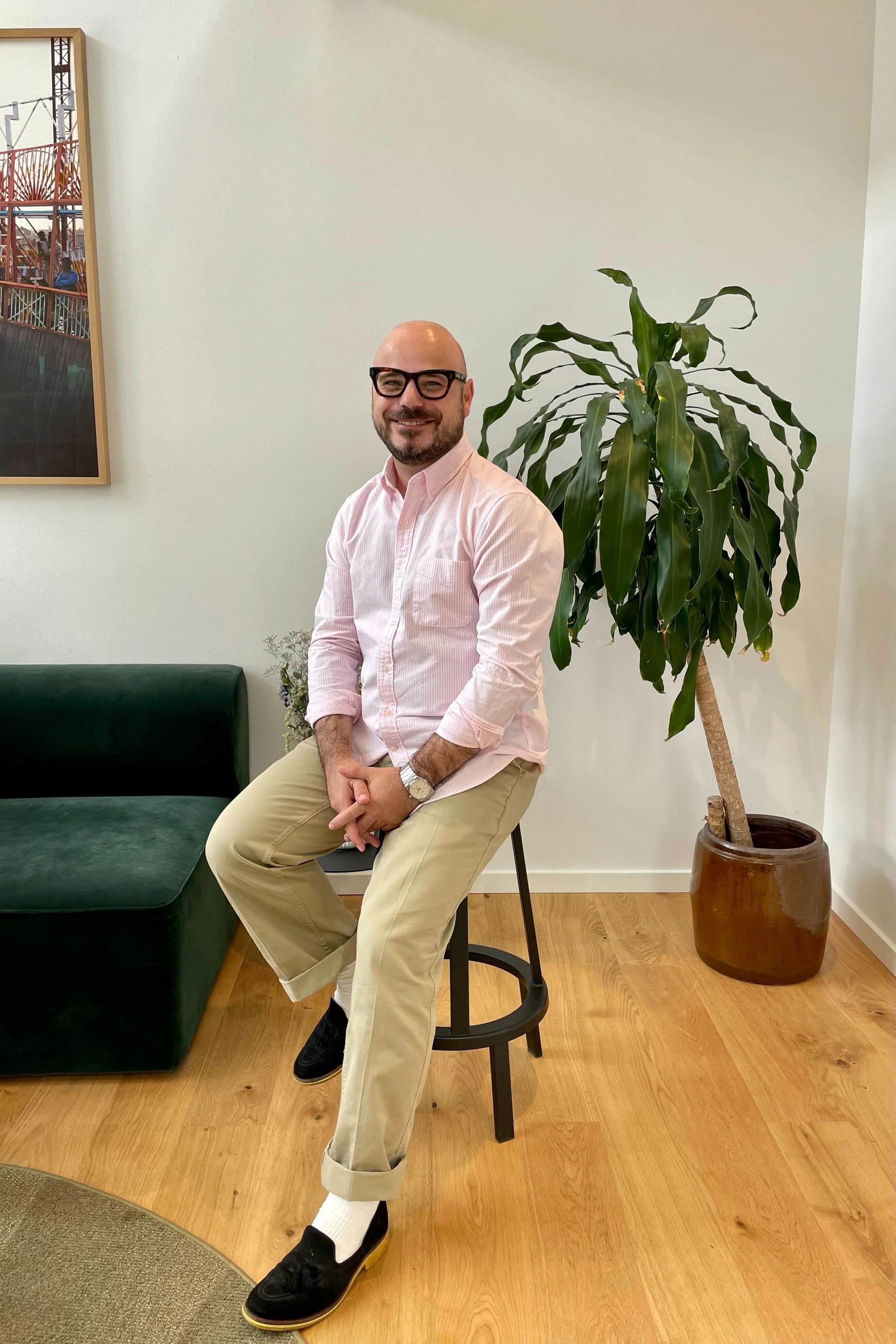Mano Spotlights - Thibaut
We are once again back at our favorite corner spot to have a chat with Thibaut, our Head of Academy. Thibaut has been working within Strategy for the past 14 years and has been teaching at Sorbonne University. Having previously worked as a strategist for major global brands in Paris and Copenhagen, we spoke about the journey that led him to where he is today.
How did you get into the consultancy industry?
I had always been interested in playing with ideas, and I only knew that I wanted to be paid to do just that, I had no real idea as a student about what is a consultant. Just after I graduated from a liberal arts college, I took an internship in the experimental department of the advertising agency BBDO. An international strategic planner took the time to explain to me his role, and it sparked an interest. Fast forwarding through the 2008 crisis layoffs, back to semiotic studies, a job of community manager for a digital cultures center in Paris, and I eventually went on for about 8 years freelancing and earning my stripes, developing my practice from early bouts in social media management to fully fledged brand strategy and trend research.
“I have always welcomed new industries and interesting cases so the key challenge is always to adapt quickly. It can be a new industry, or it can be a changing landscape.”
What are some of the biggest challenges you have faced in your career?
At heart, in strategic planning or consulting at Mano, my work has always been about helping a client solve a communication problem, previously identified or not. I have always welcomed new industries and interesting cases so the key challenge is always to adapt quickly. It can be a new industry, or it can be a changing landscape: some of my first recommendations when I started were about Myspace marketing and now I get to help brands coordinate TikTok alongside dozens of other channels in the same campaign! It also goes by cycles: some of the thinking done before 2010 about virtual worlds is applicable to the Metaverse in 2022.
It is then crucial to keep a clear head and identify what are the fundamentals of marketing and communications with slow evolution, and what is dependent on a quickly changing environment.
To give you another example of a challenge, during my first year at Mano I worked to establish a new internal marketing framework for one of our clients, to enable the brand to launch campaigns with a 360-degree approach. During this mission, we met tens of amazing marketers, listened to their needs, and co-created a clear work process with them. My team and I needed to lay down dozens of logical steps and key milestones to facilitate the work of hundreds of marketers. The key challenge was to be able to listen to all these voices and still find precise solutions that would be applied to virtually any kind of future campaign.
What is your biggest source of inspiration in your line of work?
For me personally, inspiration has to come from all kinds of disciplines outside of marketing. It is almost an inside joke among brand strategists, but Cayce Pollard and Hubertus Big-end are two fictional characters from the novel Pattern Recognition by William Gibson, and they represent the duality of our line of work between practicing in earnest our skills and the dangers of hubris. Architecture also provides a lot of inspiration, I tend to navigate between Bjarke Ingels’s “Yes Is More” motto to embrace constraints and Rem Koolhas’s “F*ck Context” because sometimes an idea is so good that it can literally reshape its own context. When it happens, you know you had a good day at work.
What are some common pitfalls that marketers experience in their campaign strategy?
The most common issue is that marketers are often so busy running the brand that they don't have the peace of mind to articulate clearly their campaign brief, which in turn makes it difficult to choose from the propositions of the creatives and channel specialists. Another one is that the campaign objectives are difficult to follow up on as the campaign development progresses. They need to be layered in trenches, from the top, with the biggest objectives of the campaign, to the bottom with the most detailed goals and KPIs proving how each and every channel and activation will contribute to the campaign’s success.
As an expat in Copenhagen, tell us something that surprised you when moving to DK?
It was the concretization of a 10-year personal dream to finally be living in Copenhagen, so I can’t say it was a complete surprise! I think the biggest discovery wasn't so much about daily life, it is still continental Europe, but the attitude toward work. We often talk about work-life balance in Denmark, but I think it is misunderstood from the outside. It is not that work is less important than elsewhere. The consensus is that work-life balance is paramount to leading a good life, as much as it is about taking pride in the work that you do. How could Danish designers spend 50 years refining what a wooden armchair could look like if they weren't proud of their craft?


